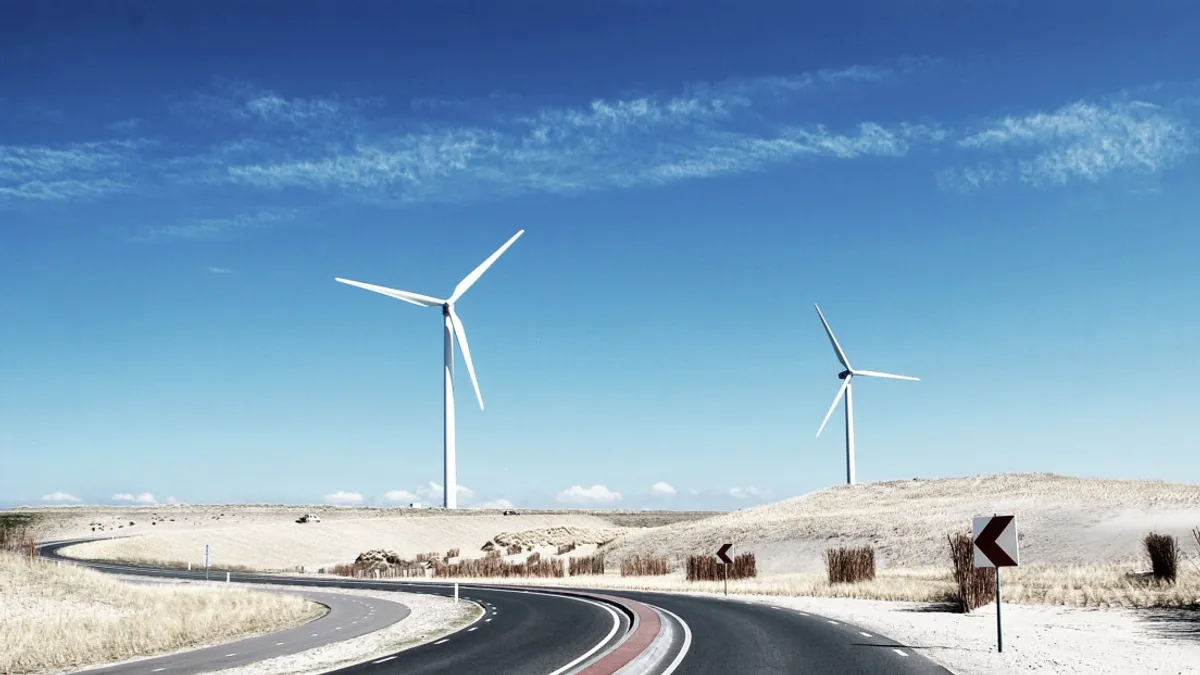Dive Brief:
- Wood Mackenzie published a study Thursday estimating the cost of a 100% renewable energy transition by 2030 within the U.S., based on the more aggressive climate plans that have been proposed, including early versions of the House Green New Deal package.
- According to the consultancy group, the transition could cost $4.5 trillion, or $35,000 per U.S. household.
- The 2030 target would put the U.S. on an extremely accelerated installation path, with more annual capacity buildout over each of the next 11 years "than what has been installed collectively over the past two decades," the report says.
Dive Insight:
WoodMac admits the timeline in their analysis may not be realistic. But it has been proposed in various plans to decarbonize the U.S. economy or move the country to 100% renewables, including Democratic presidential candidate and Washington Gov. Jay Inslee's proposal.
"We're not saying that 2030 is even achievable, because of more social political issues," Wade Schauer, director of WoodMac's Americas power research, told Utility Dive.
The $4.5 trillion is also not realistic, at least by 2030 — and the amount doesn't even include the stranded cost of the oil, gas and coal industries that would be disrupted by 100% renewables, or the costs to retrain employees.
But there are ways to trim the cost, according to WoodMac.
Prices could decrease substantially if the target date gets pushed back to 2045 or 2050, as technological advancements increase.
In addition, allowing existing nuclear plants to remain open would save about $500 billion, the report found. However, in the next decade, a lot of nuclear plants will exceed 60 years of age and start to retire. In addition, "when you get about 50% renewable energy, it's going to put so much pricing pressure on the nuclear plants that it may very well end up forcing a lot of nuclear plants to retire [prematurely], because they can't survive in a market where prices are 'zero,'" Schauer said, referring to the falling energy prices of wind and solar.
This report also contributed to the many industry voices that have noted the importance of storage technology in a future with greater wind and solar penetration.
"The wild card in all of this is what happens with battery technology," Jim Robb, president and CEO of the North American Electric Reliability Corporation, told reporters on Wednesday. "I'm not sure that lithium-ion batteries [are] the solution [for a clean energy transition]. I don't know what the technology solution is, but I bet there is one ... In my view, that's the gatekeeper technology."
Smaller, short-run lithium-ion storage facilities fail "to deliver the longer duration storage capability critical to balancing seasonal swings" in wind and solar production, WoodMac wrote. To backstop intermittency, the report assumed approximately 900 GW of storage investments would ensure reliability over the wind and solar resources needed to power the country, more than doubling the $1.5 trillion to build out wind and solar to $4 trillion.
Without ranking their importance, WoodMac identified several technologies that will play a large role in the renewables transition, including customer-facing grid edge technologies, demand response and next-generation storage (such as flow batteries, solid state and new anode chemistries).
While the price tag includes an estimated $700 billion in transmission buildout, Schauer pointed out that many will be opposed to the amount required, or to having "wind turbines in their backyard."
The publication transformed from a "much longer report" to "more of a shorter thought piece," Schauer said. "We plan to have follow up reports over the course of the next six months with more details about things like integration challenges and solutions that could help with those."
CLARIFICATION: An earlier headline referred to the total cost of the renewable energy transition and WoodMac analysts clarified that the estimated cost would not fall entirely on ratepayers directly.















